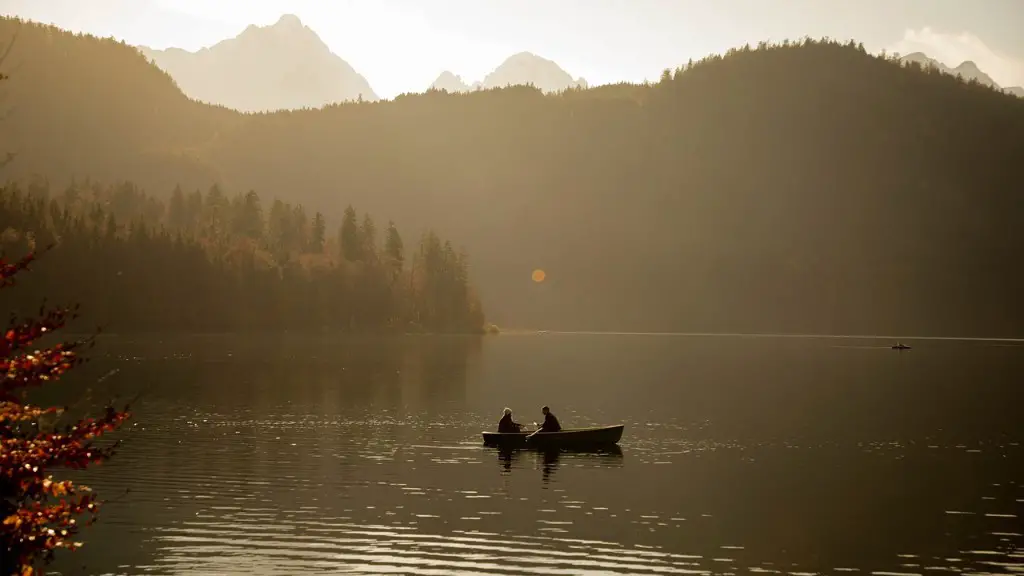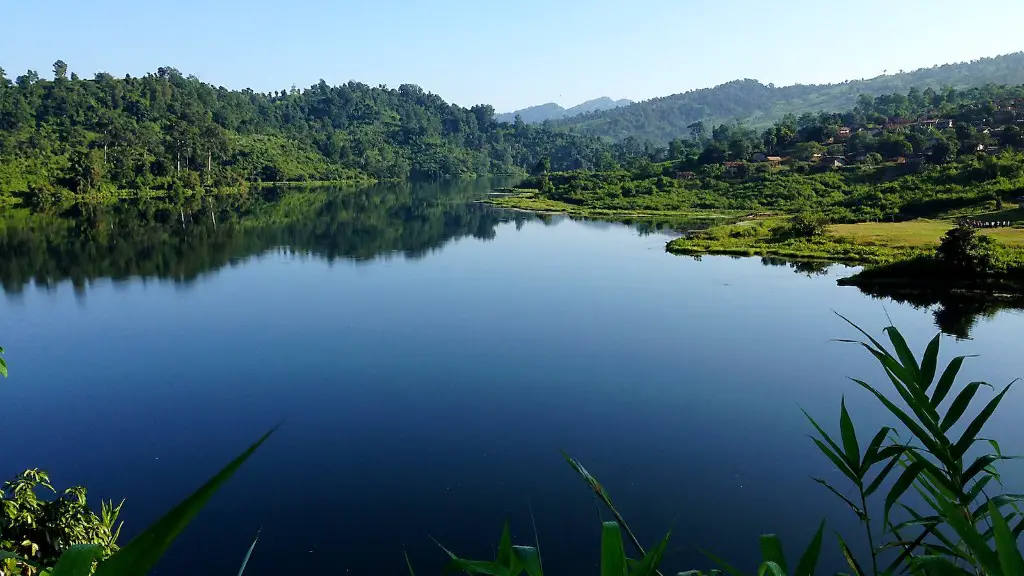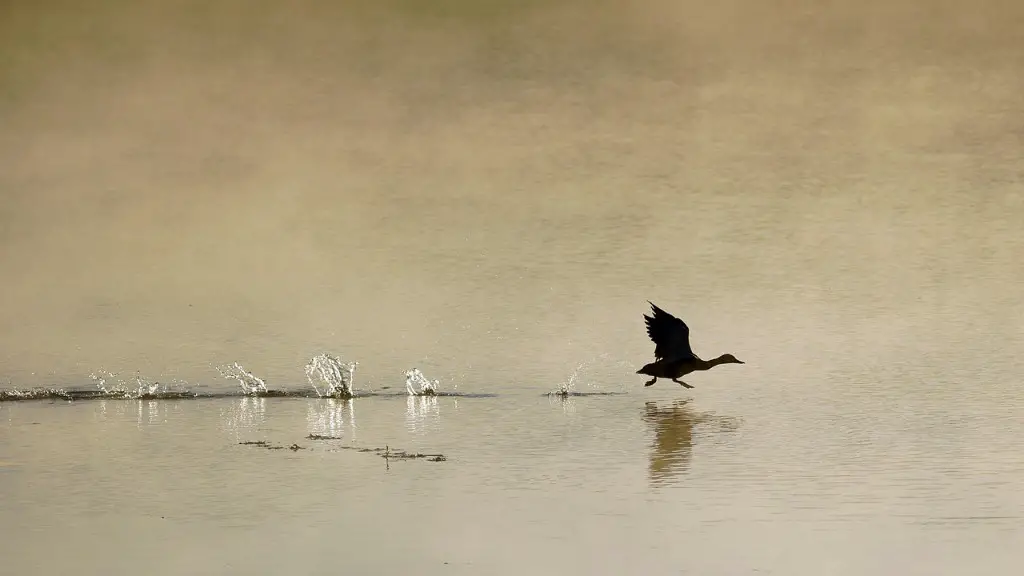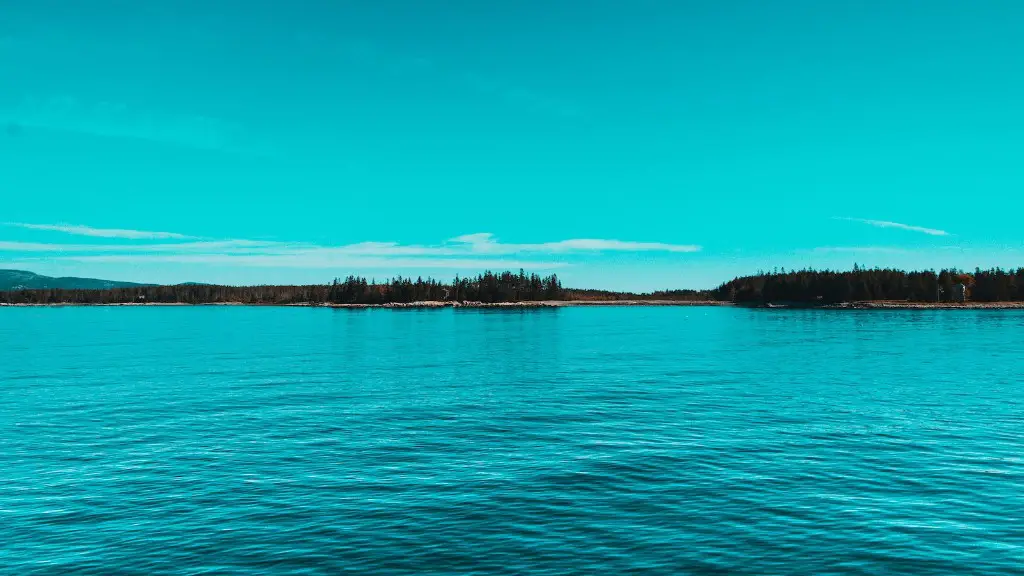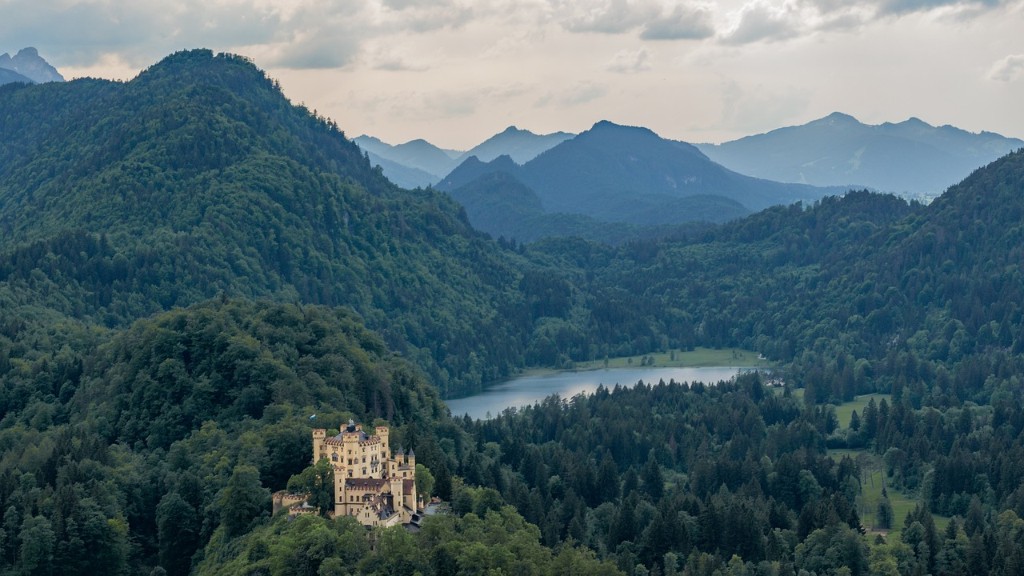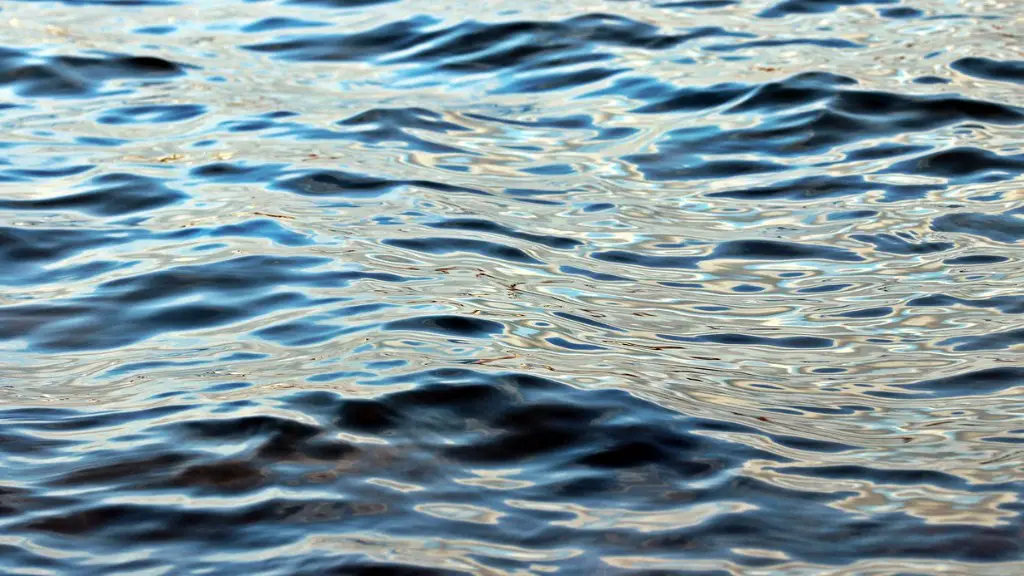Lake Superior is the largest of the five Great Lakes in North America, situated on the Canada-US border between Minnesota and Ontario. It is the world’s largest freshwater lake by surface area, and is the second largest lake in the world by volume. The lake has a natural outlet to the Atlantic Ocean, and is also part of the drainage system that feeds into the St. Lawrence River. The lake has a total surface area of approx. 82,414 km2 and a maximum depth of 400 metres.
The rise of Lake Superior is attributed to the melting of glaciers in the area during the last ice age. The ice-dammed lake formed the Superior Basin which is the bay that holds Lake Superior today. The lake is also bordered by many islands and islets and supports over 40 fish species, including lake trout and walleye.
The lake is a major hub for shipping and recreational activities. Freighters, tugs and pleasure crafts use the lake all year round, transporting goods and tourists. People also visit the lake to take part in boating and fishing, as the lake contains plenty of different species of fish, such as salmon, bass and northern pike, which attracts anglers from around the world.
In addition, the lake also supports several species of wildlife including bald eagles, loons and great blue herons. The shores of Lake Superior are also home to several protected areas, such as the Pictured Rocks National Lakeshore, the Lake Superior National Marine Sanctuary and the U.S. Fish and Wildlife Service’s Sax-Zim Bog.
The lake is also a popular tourist destination, particularly in the summer months, when the many resorts, restaurants and campgrounds that dot the lake’s shores become bustling hubs for family vacations. For example, the island of Isle Royale, located just 30 kilometres off the coast of Minnesota, is a popular spot for its rugged beauty, historic lighthouses and impressive hiking trails.
The lake’s pristine waters are also renowned for their clarity. This has allowed Lake Superior to become one of the largest sources of freshwater in the world and an important source of water for many cities, including Duluth, Minnesota, and Thunder Bay, Ontario. As a result, it not only sustains the local ecology, it also serves as a critical source of drinking water for millions of people.
Lake Superior is one of the most iconic bodies of freshwater in North America and its importance cannot be understated. Its size, diversity and beauty make it a destination for many travelers, as well as a vital resource for the communities that surround it.
Economic Importance of Lake Superior
The economic significance of Lake Superior is not to be overlooked. Millions of dollars are generated each year through recreational tourism, fishing, shipping and agricultural activities. The lake supports numerous industries including forestry, mining, and manufacturing, to name a few.
The fishing industry alone injects millions of dollars into the local economies every year. Tourists visiting the area to take part in recreational activities such as boating, camping and photography, also contribute to the local economy. And, of course, the transportation of goods and services throughout the Great Lakes region and beyond also adds to the economic vitality of the area.
Lake Superior has also become a hotspot for research. Scientists have been studying the lake’s temperature, water clarity and fish populations, as well as its effect on the local environment. This research has improved our understanding of the lake, as well as its impact on the region’s ecology and economy.
Overall, Lake Superior plays a critical role in both the ecology and economics of the region. From providing water for drinking and sustaining local wildlife, to providing a source for tourism and research, the lake is a vital resource that stands to benefit many.
Conservation Initiatives
Fortunately, there are several organizations and initiatives that are striving to protect and conserve the lake’s ecosystem. The Lake Superior Committee, made up of representatives from both Canada and America, was formed in 2007 to preserve the lake’s natural balance, biodiversity and water quality. The committee has developed numerous regulations to ensure that the lake remains healthy and safe.
Other organizations, such as the Lake Superior Area of Concern and the Lake Superior Initiative, have also been working to restore, protect and clean up the lake. They have focused on reducing the amount of contaminants entering the lake, controlling erosion, preserving fish populations and maintaining public access to the lake. These initiatives have helped to reduce the amount of harmful pollutants entering the lake, prevent the spread of invasive species, and manage beach-going activities responsibly.
At a governmental level, both Canada and the United States have various protections in place to safeguard the lake’s ecology. These include restrictions on logging and mining, as well as limits on water use. The provinces of Ontario and Manitoba have also introduced measures to limit sport fishing and preserve the lake’s natural beauty.
Lake Superior is a vital part of the Great Lakes system, and its protection and conservation should remain a priority. Through the combined efforts of organizations, governments, individuals and communities, we can ensure that Lake Superior remains an iconic and invaluable resource in North America for generations to come.
Restoration in Progress
Recent efforts to rehabilitate and restore Lake Superior’s ecosystem have achieved much success. A big part of the lake’s restoration has been the removal of the vast amount of human-made pollutants from the lake’s waters. In the last two decades, levels of phosphorus and chloride, two primary pollutants in the lake, have been drastically reduced, due in part to strict regulations and public awareness campaigns.
The lake’s fish populations have also begun to thrive in the cleaner waters, and native species such as the lake trout and walleye have returned in greater numbers. Scientists have noticed a decrease in the number of invasive species and a rise in the number of aquatic species that feed on the native fish, which is a sign of a healthy and vibrant ecosystem emerging.
In light of these successes, researchers are now taking steps to preserve Lake Superior’s ecosystem. For example, efforts are underway to protect threatened and endangered species and to reintroduce historically important species, such as the lake sturgeon. These efforts are crucial to maintaining the balance of the lake’s ecosystem and ensuring its long-term health.
The restoration efforts are an encouraging sign of the progress that can be made when communities, governments and individuals come together to protect a natural resource. These efforts will hopefully ensure the protection and preservation of the lake for many generations to come.
Significance to the Region
In addition to its economic and ecological importance, Lake Superior is deeply engrained in the culture and identity of the region. The lake has served as a center for centuries, connecting people, cultures and nations. The Ojibwe, for example, consider the lake to be a sacred waterway and a source of life and sustenance. And the lake has provided a safe home and livelihood for many first nations peoples.
Many people in the region also consider Lake Superior to be a spiritual source. Locals and visitors alike flock to the lake’s shores to take in its breathtaking scenery and reflect on its vast beauty. For many, it is a source of solace in a world that can be chaotic and overwhelming.
At the same time, the lake is an important educational resource. Students from around the region visit the lake to learn about its history, ecology and culture. Environmental educators use the lake to teach the importance of sustainability, conservation, and stewardship.
Overall, Lake Superior has become a vital part of the region’s culture and identity. The lake draws people of all ages and backgrounds, reminding us of the importance of preserving our natural resources and taking care of the planet.
Potential Hazards
While Lake Superior is a wonderful natural resource, it faces a number of threats from climate change, human activity, and invasive species. Climate change is causing warmer temperatures and more severe storms which can intensify and increase the amounts of algae and bacteria in the lake’s waters and disrupt aquatic species.
Human activity can also pose a risk to the lake’s ecosystem. For example, the construction of roads and other infrastructure can cause water pollution, as runoff from pavement and chemicals enter the lake.
Invasive species are also a major threat, as they can disrupt the lake’s delicate balance and pose a risk to native species. Controlling the spread of invasive species is difficult and requires coordinated efforts from governments, citizens and organizations.
Thankfully, there are a number of organizations working to protect Lake Superior and its inhabitants. These organizations are developing solutions to mitigate the impacts of climate change and reduce the risks of human activity and invasive species.
Lake Superior is a vital resource, and it is important that we take steps to protect it now in order to ensure its future health and the health of the region’s economy and culture.
